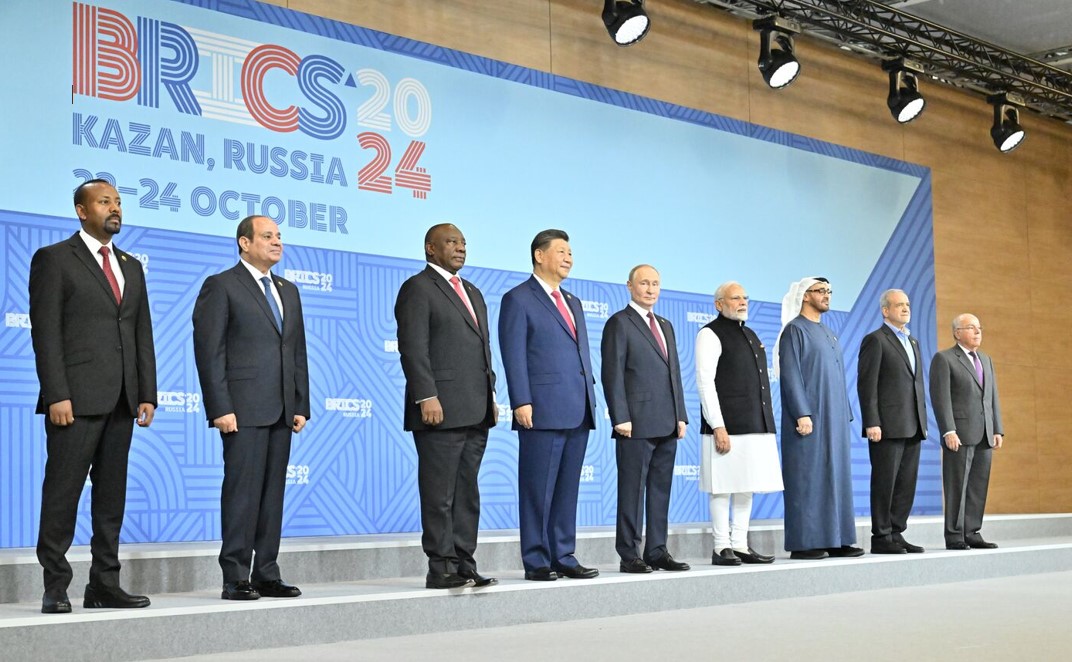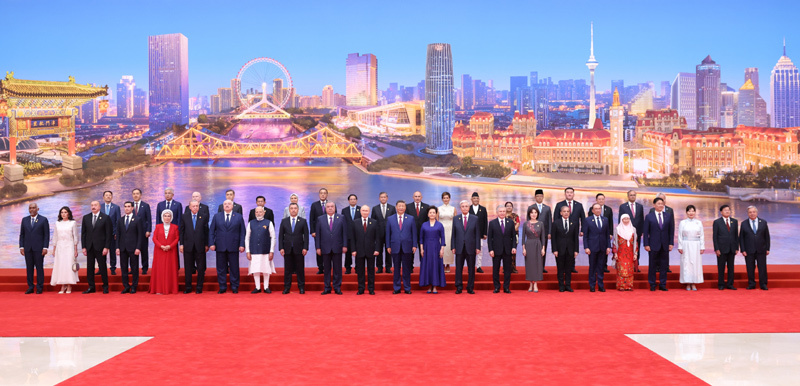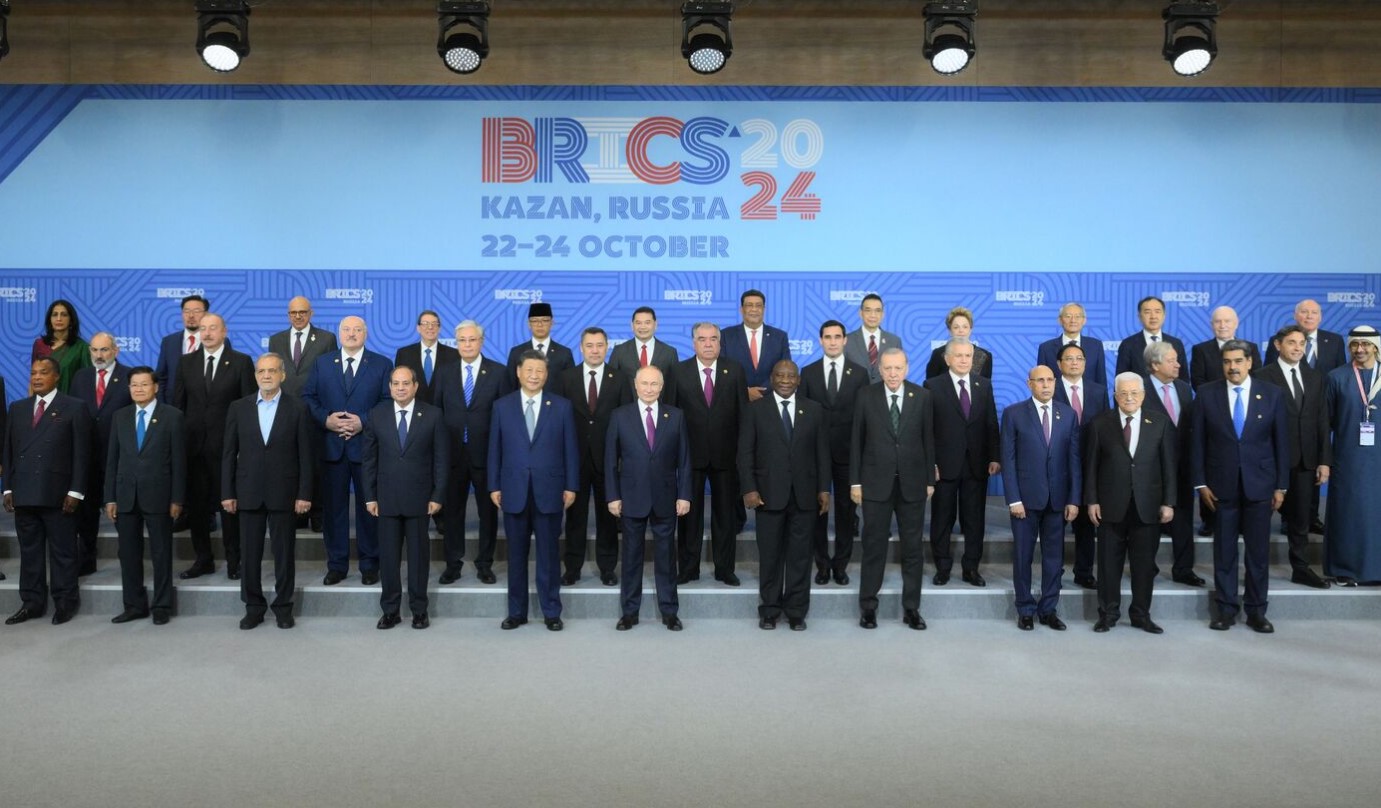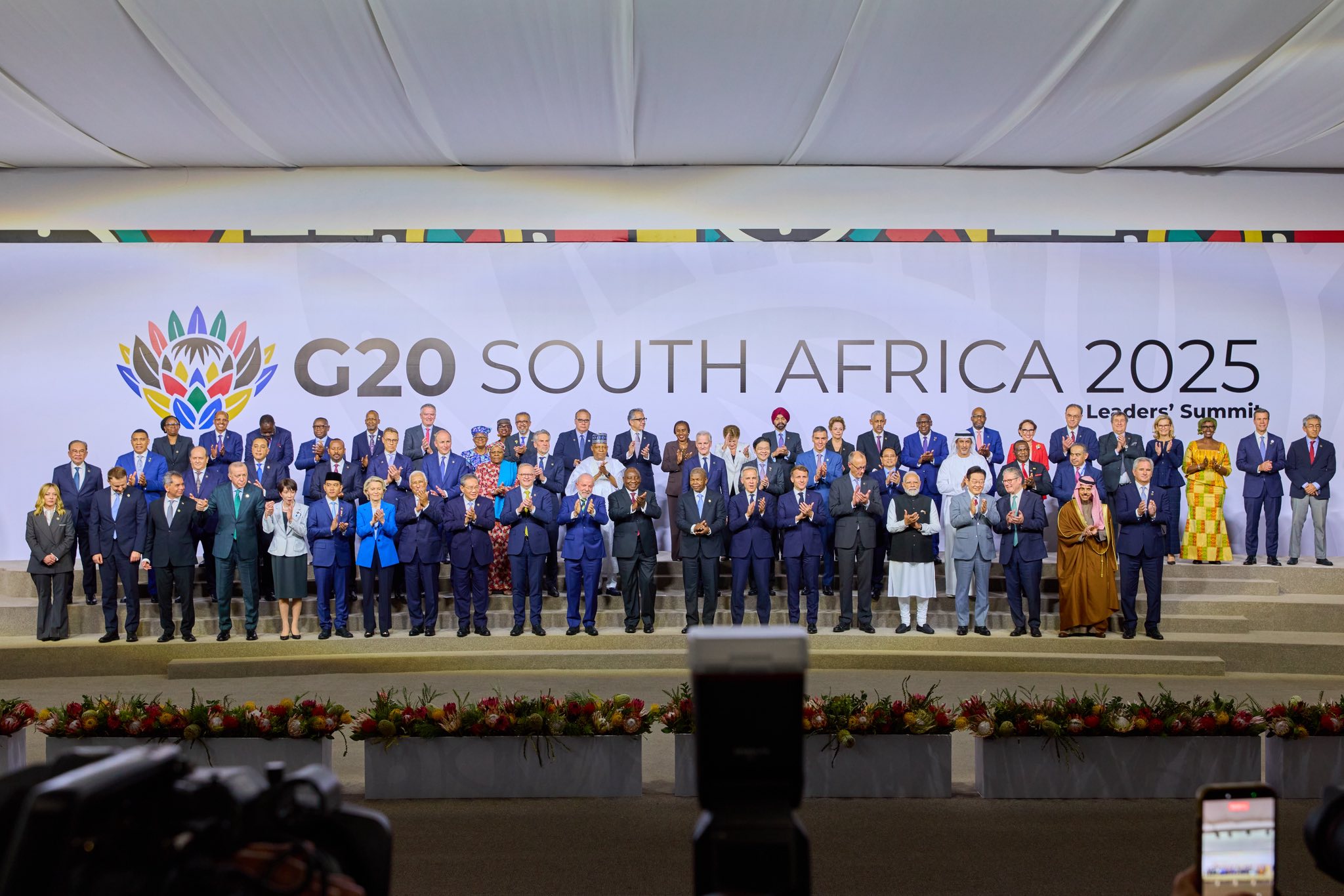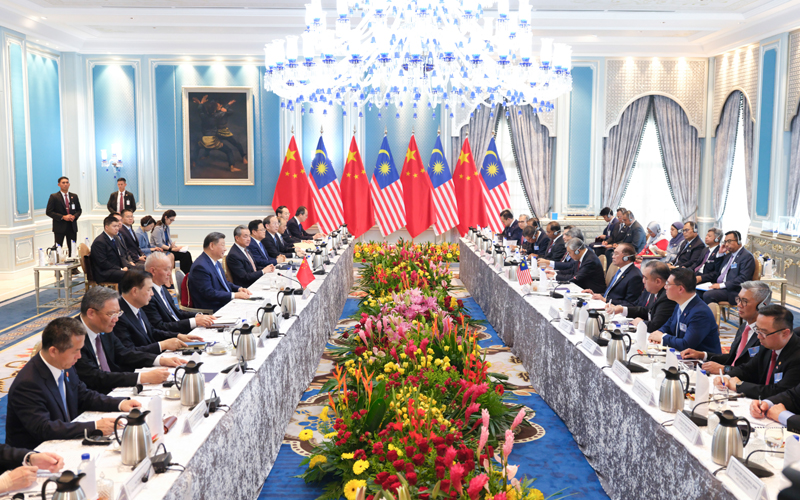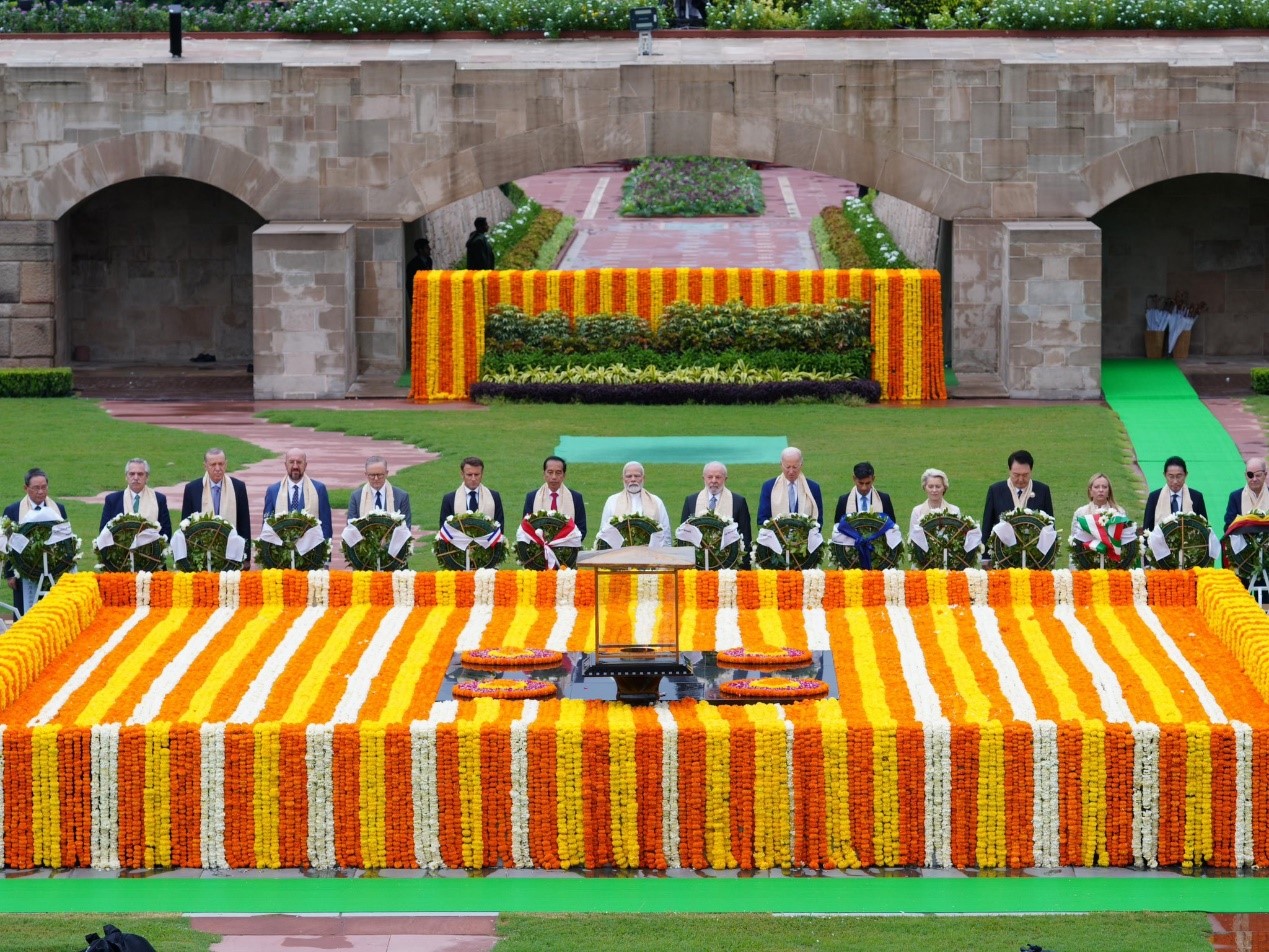At their 16th summit in Kazan, Russia, the BRICS countries took a further step towards geographical expansion with the inauguration of a partner group. However, given the growing internal heterogeneity of the group, it is questionable whether the inclusion of 13 new countries will help the organization to evolve from a loose association of emerging economies into a more formalized global alliance. Picture source: Kristina Kormilitsyna, October 23, 2024, Photohost Agency Brics-Russia2024, https://photo-summit.brics-russia2024.ru/en/media/8790176.html?context=list&list_sid=list_351011332.
Prospects & Perspectives No. 63
A More Robust BRICS Confronts the World
By Günther Maihold
At their 16th summit in Kazan, Russia, in October, the BRICS countries took a further step towards geographical expansion with the inauguration of a partner group, a new format in response to the growing number of countries interested in joining the group. However, given the growing internal heterogeneity of the group, it is questionable whether the inclusion of 13 new countries will help the organization, with its largely informal working methods, to evolve from a loose association of emerging economies into a more formalized global alliance. The participation of 36 countries in the Kazan summit demonstrated once again that the current appeal of BRICS lies above all in allowing members and partners greater strategic autonomy in order to achieve a more balanced relationship with a wide range of geopolitical actors. To the surprise of many observers, the core members — Brazil, Russia, India, China and South Africa — seem to be perceived as a kind of hedge against geopolitical tensions, even though some of them are protagonists of confrontation and hard power projection in world affairs.
A new robustness for BRICS?
From this point of view, which dominates the discourse of China and Russia, the BRICS grouping will become more robust as it expands to include more important countries. To this end, an extended round of 13 new partner countries has now been established in Kazan, which do not enjoy the full membership status of the 10 core BRICS+ countries, but are partner countries “in the waiting room” for full membership. With the invitation of Algeria, Belarus, Bolivia, Indonesia, Kazakhstan, Cuba, Malaysia, Nigeria, Thailand, Turkey, Uganda, Uzbekistan and Vietnam, a special focus has been placed on the Asian region, with Indonesia, Malaysia, Thailand and Vietnam being selected as economic and political heavyweights of particular importance in the geopolitically contested Indo-Pacific region of the world
The concept of “more members, more power” is also reflected in the inclusion of Russia’s partners Belarus, Kazakhstan and Uzbekistan, which are also important for China’s Silk Road project of global connectivity. Finally, Turkey has also been able to realize its ambition to be recognized in another international forum. Overall, a pattern of cooperation among resource-rich nations within the BRICS format is emerging. For the newly selected partner countries, this expansion is not only symbolic in terms of the prospect of full membership; many expect far-reaching economic and political effects. By working with the new partners, the BRICS can reshape global trade networks, diversify supply chains and reduce dependence on Western financial systems.
More members, more heterogeneity
However, the enlargement of the participating states also poses problems for the cohesion of the political action of this group of states. It is true that the final declaration of the Kazan summit clearly showed the unity with which the participants were able to speak out in favor of multipolarity as a principle of world order, to support UN reform and to unite in criticizing the Western sanctions regime. However, this does not translate into a greater coherence of political positions within the new range of partners: despite the formulation of 133 points in the final declaration of the Kazan summit, many questions remain unanswered, mere declarations of intent and few truly binding resolutions dominate, and a fundamentally anti-Western tendency cannot be discerned. The majority of the newly named states have close relations with the West.
Moreover, the many countries being discussed as possible future members do not exactly form an anti-Western bloc; they include Turkey, a NATO member, and Vietnam, a major trading partner of the U.S. Rather than “choosing” between competing geo-economic blocs, many of the partner countries seem keen to have a foot in both camps.
As we can read in the Kazan joint statement, the BRICS have pledged to cooperate on a number of uncontroversial and unspectacular initiatives in the areas of climate change, higher education, public health, and science and technology. This cooperation in relatively traditional areas also shows that repeated calls for the de-dollarization of trade and the creation of an international payment system to counter the U.S. dollar and circumvent Western sanctions are making little headway.
The BRICS dilemmas continue
This means that the basic BRICS dilemma remains even after the Kazan summit: There is no common willingness to share the costs and burdens of the desired projects, and mutual blockades mean that there is no leadership structure to develop BRICS+ into an authoritative bloc in international politics. Hence the warning, echoed in Kazan, that the BRICS+ should not end up as a new G77, a grouping with a large membership but little political clout.
As in other informal club-like organizations, internal tensions can only be overcome by avoiding issues that divide members. Mere territorial expansion through expanded membership cannot eliminate these problems, although they can always be glossed over by holding summits. The emerging BRICS grouping will not initially embarrass the West, but it should have become clear to all Western actors that it is not enough to dismiss this alliance as a political lightweight.
What characterises the main thrust of the BRICS’ political action is their interest in changing some of the rules of the existing international (economic) order that hinder their development and economic opportunities. What they are seeking is not a direct confrontation with existing institutions, but rather, under the leadership of China and Russia, the creation of the first building blocks of what has been called a “parallel order” with post-Western characteristics. It is clear, for example, that the core group of India, Brazil and South Africa are questioning the validity of Western concepts of order, as the reliability of traditional partners such as the EU and the U.S. has been called into question in the wake of the financial and economic crisis and the war in Ukraine or Gaza. However, the presidents of the countries attending the Kazan summit have repeatedly affirmed that the BRICS grouping is not intended to challenge other international coalitions such as the G7 or the US, but to “organize” the so-called Global South. This intention does not imply a generalized antagonism towards the industrialized countries of the G7 or, more generally, “the West,” but a clear message to promote their petitions to change some of the rules of the international governance system, especially in the Bretton Woods institutions and via the G20. With new members such as Cuba and Iran, the shifting geopolitical winds of confrontation have also found their destiny in the BRICS+, but they are certainly not the dominant currents that will characterize the grouping's international actions.
(Günther Maihold is Non-Resident Senior Fellow and former Deputy Director of the German Institute for International and Security Affairs (SWP).)


